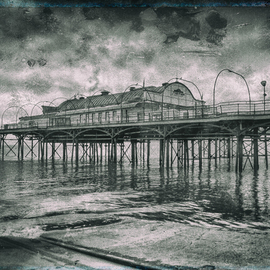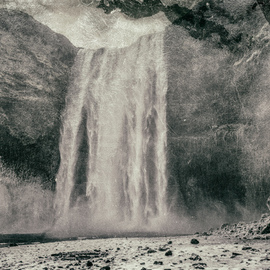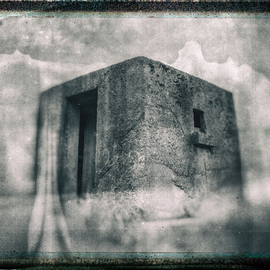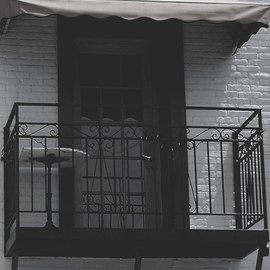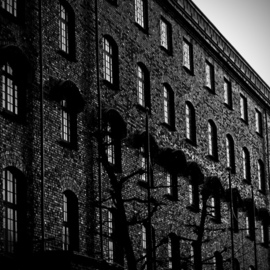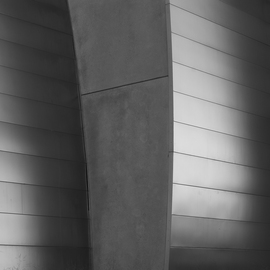Steetley Magnasite No 1 Photography By Jonathan O'Hora
Artwork For Sale ❯ Photography ❯ Jonathan O'Hora ❯ Architecture ❯ Steetley Magnasite No 1
All Artworks ❯
Photography Black and White ❯
Jonathan O'Hora ❯
Architecture ❯
Steetley Magnasite No 1
Artist:
Jonathan O'Hora
Title:
Steetley Magnasite No 1
Price:
Year:
2017
Medium:
Size - (USA):
12 W x 8 H x 0 D (inches)
Size - (metric):
30.5 W x 20.3 H x 0.0 D (centimeters)
Theme:
Edition:
Original
Artwork ID:
611314
PDF Copy:
Artwork Description:
Photography: Black White, Digital and Manipulated on Glass and Paper. Kodak Metallic Print under Acryllic Glass Print Frame Size 12” x 8” Steetley Magnesite, also known as Hartlepool Magnesia Works and Palliser Works, was located at Hartlepool Headland. Originally known as The Steetley Lime and Building Stone Company and was named after the small hamlet of Steetley which is located near Worksop, in Nottinghamshire. They owned a small dolomite quarry producing high quality building stone, some of which was used in the building of the Houses of Parliament. New processes in the steel industry in the mid 18th century caused the company to change direction. A demand for stronger furnace linings made from dolomite helped secure Steetley’s future. It was discovered that dolomite could be converted into a hard burnt lime and became known as Dolime. Demand for Doloma increased rapidly and new sources for Doloma were required so the company bought up quarries up and down the country. By 1918 they were producing 100,000 tonnes a year. The demand due to the war efforts increased dramatically year on year and by the mid 1930’s they had either bought or merged with nearly every quarry or producer in the UK. Working closing with the steel industry the company began looking at other opportunities. They knew that the steel industry was also using increasing quantities of refractory bricks made from calcined magnesite or magnesia but there was a problem – the UK has no natural deposits. A new way had to be found to produce Magnesite. As the business prospered, funds became available for research and development and in 1936 the first research laboratory was built. One of its first jobs was to explore the possibility of releasing magnesia from dolomitic lime Dolime by reacting it with seawater. It didn’t take long for their experiments to prove successful and in 1937 they acquired what’s now known as Steetley in Hartlepool – 24-acre’s of land on the coast and close to major steel works, rail and port infrastructure and just 15 miles from high purity dolomite deposits in Coxhoe and the Durham coalfields that provided fuel for the kilns. £10,000 was spent building what’s known as the Palliser Works – an experimental plant to see what could be achieved. Once it proved successful The British Periclase Company was drafted in to build and operate a full scale magnesite plant. A year later saw the construction of a new plant at Hartlepool capable of 10,000-tonnes-a-year built, financed jointly by the company and the Special Areas Reconstruction Association. The product was sold and marketed as Britmag and when war broke out in 1939 Hartlepool was the only UK source of magnesia. Reinvestment of profits saw major expansion in the early 1960’s, capacity was increased yet again, new settling tanks, a 2,000ft pier was built to provide fresh seawater to the plant. All of which helped the company to produce roughly 250,000 tonnes a year. Some of this was high quality grade Magnesia. The Steetley company was finally bought out by Redland Plc in 1992. They ran the plant at Hartlepool for about five years until it was sold in 1997. The new company called Britmag could not compete and went into administration in 2002. The recession in the 1980’s made the company suffer, the declining steel industry and the closure of British Steel plants proved too much for them. But a solution was found to keep the plant open and the company CJC Chemicals was born. This proved to be short lived as they closed the plant in 2005. The site was left partly demolished and the pier became a big attraction for local fishermen despite being incredibly unsafe and dangerous, a section was then removed to prevent anyone venturing out. The site owners and council also came under attack for leaving the rest of the site in such a dangerous way. In hot weather children could often be found swimming in the large tanks These were then drained out into the sea.
Artwork Keywords:
Original Photography











